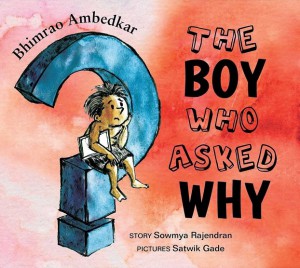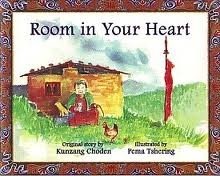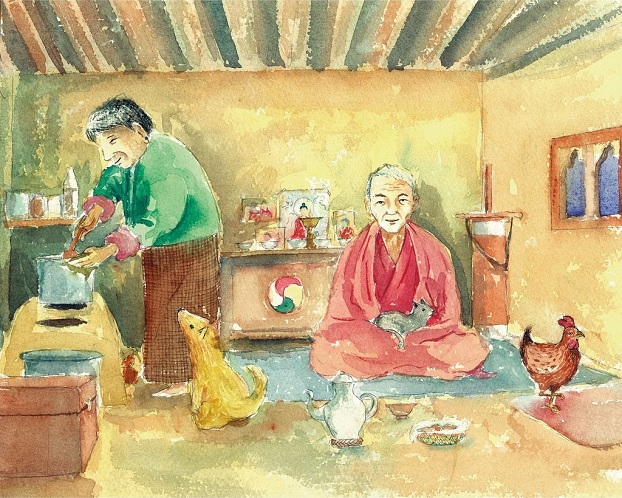
In March, Equality Labs — a South Asian community technology organization — released the first survey of caste in the United States. The facts are stark: One in four Dalit survey respondents reported they had faced verbal or physical assault based on their case. One in two Dalit respondents live in fear of their caste being “outed.” With this recent data in mind, Kitaab World’s U.S. release of Bhimrao Ambedkar: The Boy Who Asked Why, by Sowmya Rajendran with pictures by Satwik Gade, feels particularly timely.
The picture book narrates the life story of Bhimrao Ramji Ambedkar (“Babasaheb”), the jurist, politician, activist, and thinker who campaigned against social discrimination against Dalits. Known as a prolific scholar, Ambedkar was also a principal architect of the Indian Constitution.
Picking up the book, I hoped for an exploration of Ambedkar’s life that was beyond what I could find in a Wikipedia page. Instead, the book wanders into a simplistic rendering of the visionary’s life that veers into caste-based respectability politics and historical erasure. For example, Rajendran writes:
[Ambedkar] won a scholarship to study in America. There he discovered that he could go where he wanted, sit anywhere, drink and eat from the same cups and plates as others around him. For the first time, no one thought he was an Untouchable.
To an American eye, passages like this highlight a worrying historical amnesia. Ambedkar moved to the United States in 1913 to complete his postgraduate studies at Columbia University. During the same period, U.S. courts alternated between classifying Indians as “White” and “non-White,” while Jim Crow laws fueled decades of racial segregation. Black Americans could not go where they wanted, sit anywhere, or drink and eat from the same cups and plates as white Americans.
In sidestepping the intersection of race, caste, and history completely, The Boy Who Asked Why loses the opportunity to help children think through Ambedkar’s story with nuance and to truly ask “why.”

Another Kitaab World offering fares better in comparison. Room in Your Heart, written by Kunzang Choden and illustrated by Pema Tshering, is a Bhutanese folk tale recounting the generosity of an old woman towards a slew of visitors. The book culminates with facts about the Kingdom of Bhutan, which may feel trite to some readers, but appealing to others who are unfamiliar with the South Asian country.
The book’s gentle watercolors suffuse the otherwise simple storyline with warmth. Those seeking #OwnVoices titles for their bookshelves will be pleased — Kunzang Choden is a Bhutanese folklorist and oral historian, one of the first Bhutanese women to publish novels in English.

Rewinding even five years ago, there was a remarkable dearth of picture books for children under five that featured South Asian characters. The landscape is markedly different now. Simon & Schuster now boasts Salaam Reads, a vibrant imprint for Muslim children’s books, and indie publishing house Bharat Babies just announced its thirteenth title.
The middle-grade scene, too, is bursting with gems: Karma Khullar’s Mustache evokes Judy Blume nostalgia in a charming exploration of adolescent awkwardness, while The Serpent’s Secret brings to life a demon-slaying protagonist in a magical world inspired by Bengali folktales.
We are at a tipping point in American publishing where we can afford to be choosier with the books that we add to our classrooms, homes, and libraries. Rather than viewing critical reviews as weaknesses, I believe we can — and should — celebrate that we are at a juncture where complex South Asian characters are no longer a rarity in our children’s literature. Our stories are worth telling, and it is through interrogating these stories carefully that these rich narratives can continue to grow.
***
Nina Bhattacharya is a writer and global health educator based in Cambridge, MA. She’s a graduate of the Harvard T.H. Chan School of Public Health and was a 2012-13 Fulbright Fellow in Indonesia. Find her at @onlynina and listen to her on the Almirah Radio Hour.
Additional reading:
Telling the Stories of South Asia: A Conversation With Sailaja Joshi of Bharat Babies
Pashmina Unravels Adolescence With Sensitivity & Heart
The New Voices of South Asian Young Adult Literature












